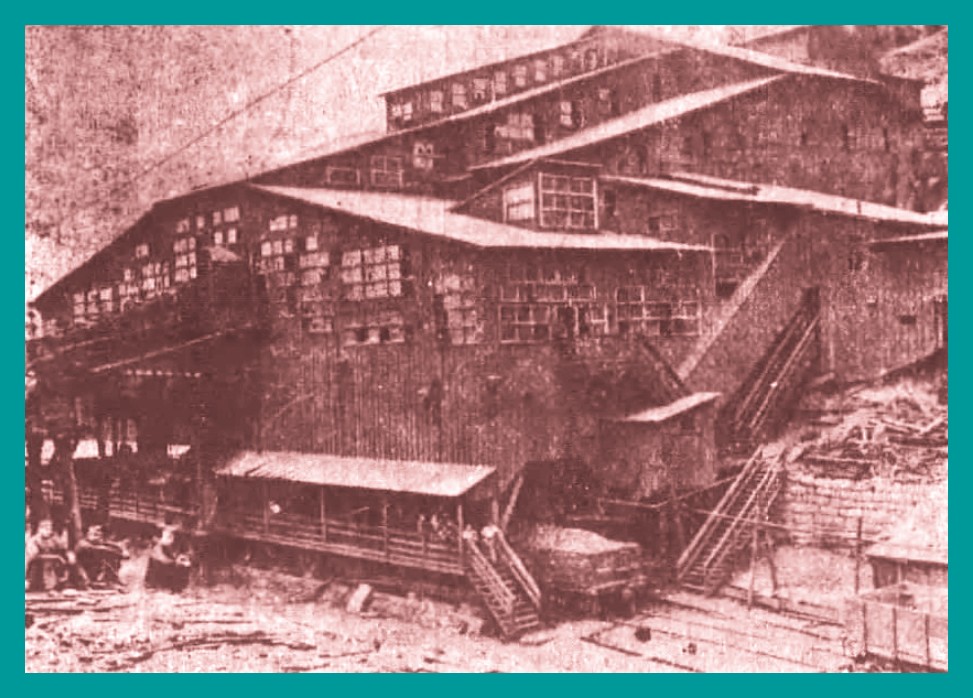LYKENS VALLEY COAL – WHEN DISCOVERED
On a Sabbath day in the year 1825, Jacob Burd Sr., and Peter Kimes, then living at the lower end of Short Mountain, in what was then Lykens Township, in the northeastern part of Dauphin County, went out on the mountain for a stroll, and when near the top paused, and took in the magnificent view of the valley below. One of them having a stick in his hand, dug it in the ground carelessly and the dirt seemed “suspiciously” black. They made haste to communicate this to others, and soon the opinion became general that ther must be coal deposits in the mountain. Not many days thereafter a party were successful in digging our what proved to be an excellent quality of coal and a road was made and the coal brought down the mountain in wagons.
The tract of land, before comparatively worthless, now became an object of great commercial value, the richness of coal being fully established as the very first order of red ash, with ashes heavy, and containing 89 per cent of fixed carbon. The tract consisted of 1600 acres and was purchased a short time before this by Thomas P. Cope, then a well-known merchant of Philadelphia, for the paltry sum of $400 – the consideration being one-half in store goods and the balance in shoe buckles. These lands were for a time controlled by Mr. Cope, but afterwards became the property of the Short Mountain Coal Company, superintended by Job R. Tyson, a prominent attorney of Philadelphia, and a son-in-law of Mr. Cope.
Coal was gotten out in a small and scattered way until the year 1831, when the Wiconisco Coal Company (named after the Wiconisco Creek, a stream in the immediate vicinity) was organized and composed of six members, as follows: Simon Gratz, Samuel Richards, George H. Thompson, and Charles R. Thompson, all of Philadelphia; and Henry Schreiner and Henry Sheafer of Dauphin County. The first-named gentleman was possessed of large means and visited the region frequently, taking great interest in its development. Work was now begun by drifts in the gap at Bear Creek, a tributary of Wiconisco Creek, and coal was sold in the vicinity in 1832. James Todorff, John Brown and William Hall, who came from Schuylkill County, were the first experienced miners to lend their skill to the great work. It may here be stated that this Short of Coal Mountain, where the work was commenced. is a prong of the Southern Anthracite Coal Field, borming a narrow basin, hardly more than a mile wide at the head of the valley. The southern side of the basin, or the North Dip, is the one that has been worked from that time to the present [1908].
April 7, 1830, an act of the Legislature was passed forming the Lykens Valley Railroad and Coal Company, the object of which was to construct a railroad from Millersburg, a point on the Susquehana River, 10 miles distant. The road was located on the North Foot of Berry’s Mountain by a Mr. Ashwin, an English civil engineer. The road was constructed under the direction of John Paul Jr., civil engineer; Henry Sheafer, superintendent; and Simon Sallada, director. This was the fourth railroad in the United States, and first in Dauphin County, built for the purpose of carrying anthracite coal. The road was completed in 1834 and began transporting coal by horsepower on a flat strip rail. It required two days to make a trip to Millersburg, as the road was a single track, badly constructed, and the cars frequently jumped the track. A number of ark-loads of coal were shipped down the Susquehanna River from Millersburg in the spring of 1834. Coal could only be shipped in this way in times of a high freshet, as ordinarily the river would have been too shallow. This being too spasmodic, another plan soon suggested itself. The coal cars were boated across the river from the terminus of the railroad at Millersburg to the Pennsylvania Canal at Mt. Patrick , on the opposite side of the river.
The Lykens Valley Company erected a set of chutes at this point, where they shipped their coal to market. The first boat load of Lykens Valley coal sent by canal let Mt. Patrick, Saturday, April 19, 1834, by boat 7,643 tons. Capt. C. Faunce, consigned to Thomas Borbridge, Columbia, Pennsylvania.
Shipments continued this way until 1845, when the railroad was worn out and nothing more was done until 1848, when the road was re-graded and laid out with T-rail. The Wiconisco Canal was built in 1848, and shipments resumed and rapidly increased from that time. Coal was mostly shipped in lump form until 1848, when the Lykens Valley Coal Breaker was built, and assorted sizes were obtained for shipment.
_____________________________________________
Article & photo of Short Mountain Breaker from a special Souvenir Edition of the Lykens Standard, March 13, 1908, via Newspapers.com.
Corrections and additional information should be added as comments to this post.
